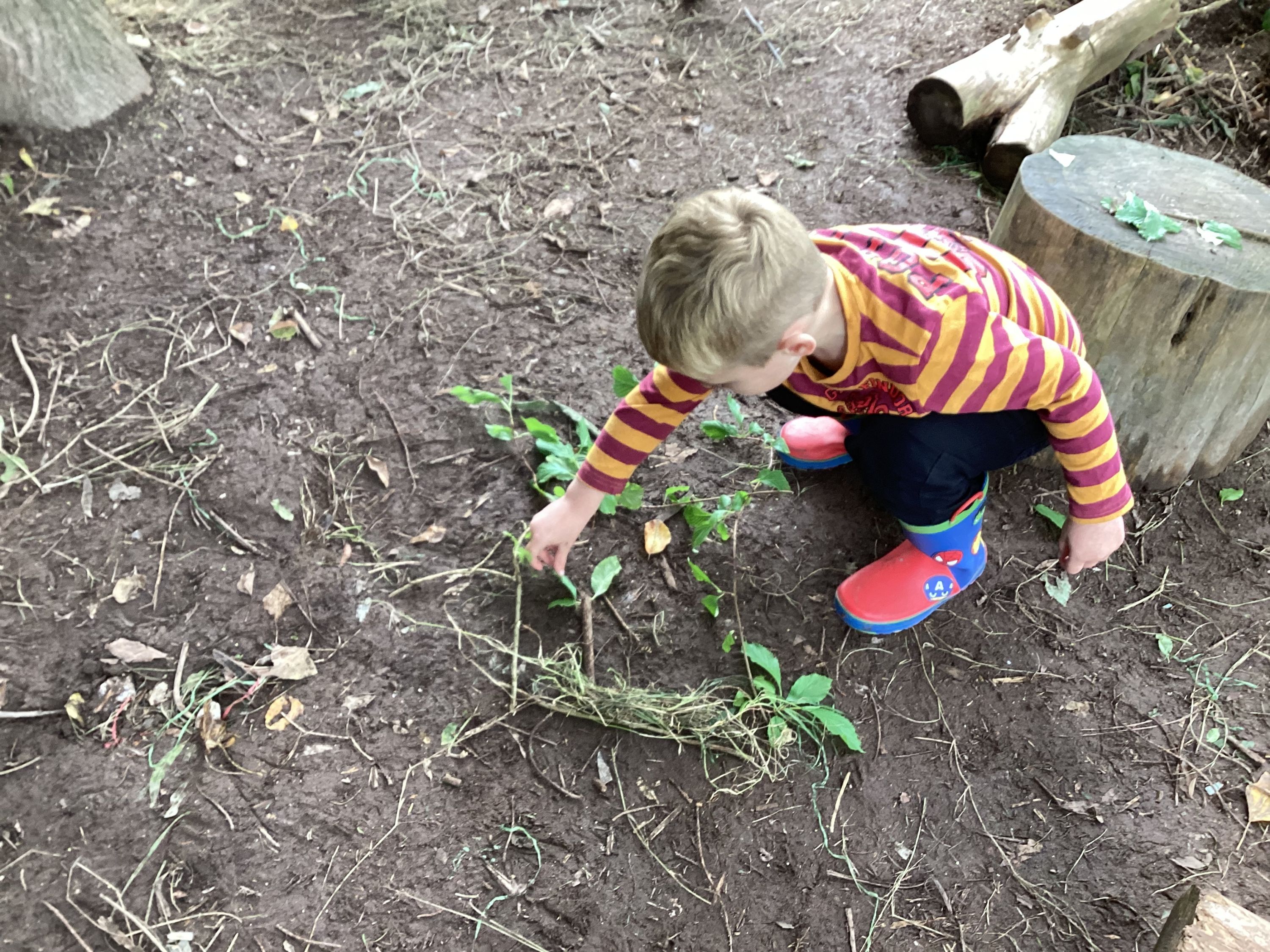Forest School

Forest School at St Nicholas CofE Primary School
Forest School Videos:
Making Mini Collections and Exploring our Grounds
Willow Wands and Mud Sculptures
What is Forest School?
Forest School is a long term, holistic learning process that aims to raise self-esteem and self-awareness in participants. Regular sessions take place in a natural or woodland environment, where the landscape itself enhances the experience of learning. Qualified practitioners facilitate learner-centred sessions where participants can take supported risks to achieve personal outcomes. Forest school can be applied to all age groups and abilities, and can be linked to the National Curriculum and Early Years Foundation Stage.
Forest School Definition
Forest School is an inspirational process, that offers children and young people opportunities to achieve, develop confidence and develop self-esteem, through hands on learning experiences in a local, natural or woodland environment.
Forest School Principles
Forest School has six key principles which are:
- Forest School is a long-term program of regular sessions, rather than one-off or infrequent visits. The aim is to provide a deeper knowledge of the natural environment and how it changes across the seasons.
- Forest School takes place in a natural or woodland environment to support the development of a lifelong relationship between the learner and the natural world.
- Forest School aims to promote the holistic development of all involved, fostering resilient, confident, independent and creative learners.
- Forest School offers learners the opportunity to take supported risks appropriate to the environment and to themselves.
- Forest School is run by qualified Forest School practitioners, who continuously maintain and develop their professional practice.
- Forest School uses a range of learner-centred processes to create a community for being, development and learning.
Forest School at St. Nicholas
We are very fortunate at St. Nicholas to have two main Forest School areas on site. Both of our forest school areas provide different woodland experiences for the children.
Site 1: On site area in the copse adjacent to the car park.
Site 2: On site area at the bottom of the school field behind the willow screen.
We also have an outdoor classroom area under the fir trees next to the Willow Club Garden, a Willow Dome, and a Science Garden.
Forest School Handbook
Site Management Plan and Maintenance
Site 1
Year 1:
- Clear deadwood and create deadwood habitats and dead-hedges. This will help to enclose the site.
- Coppice the hazel and willow – Harvest wood for crafts.
- Prune broadleaf and coniferous trees, removing low level and eye level branches and protrusions.
- Remove Hogweed, brambles and any invasive plants from the field layer, leaving some overgrown areas for wildlife habitats.
- Sow wild flower meadow areas around the woodland, where sunlight is good.
- Establish path through the woodland.
- Establish a fire pit area.
- Prune overhanging branches in fire pit area.
- Check tree condition and identify suitable trees for tree swings and hammocks.
Year 2 & 3:
- Build and install bird boxes and bird feeding stations.
- Build hedgehog houses and install.
- Construct a bug hotel.
- Clear a dedicated tool work area within the woodland.
- Construct willow fencing using the young willow shoots generated by coppicing.
- Plant additional hazels and willow to introduce structures, such as a living wigwam, dome or arch.
- Prune broadleaf and coniferous trees, removing low level and eye level branches and protrusions.
- Continue to remove Hogweed, brambles and any invasive plants from the field layer, leaving some overgrown areas for wildlife habitats.
- Extend wild flower meadows.
Future projects:
- Rotate coppicing of willows and hazels in order to provide a regular supply of wood for crafts and activities.
- Introduce more native flowers to the field layer by planting bulbs.
Site 2
Year 1:
- Clear deadwood and create deadwood habitats and dead-hedges at either end of the willow screen. This will help to enclose the site.
- Coppice the hazel and willow – Harvest wood for crafts.
- Prune the willow screen as necessary to encourage fresh growth and prevent it from growing too tall.
- Cut back nettle and bramble patches.
- Establish a fire pit area.
- Prune overhanging branches in fire pit area.
- Check tree condition and identify suitable trees for tree swings and hammocks.
Year 2:
- Create willow fences to replace the dead hedging.
- Build additional deadwood habitats.
- Build and install bird boxes and bird feeding stations.
- Continue to cut back nettle and bramble patches.
- Continue to prune the willow screen as necessary to encourage fresh growth and prevent it from growing too tall – Collect wood for crafts and activities.
- Create a classroom area with blackboard.
Future projects:
- Install a manual water pump to draw water from the river Bourne.
- Plant additional willow and hazel.
- Build a raised weather proof log store.
- Build a permanent raised shelter or storage shed.
Whole School Site Plans:
- Sow wild flower seeds on embankments and areas without footfall.
- Re-instate a school pond in the science garden – maintain bi-annually.
- Build a bug hotel in the science garden.
- Sow wild flowers in the science garden.
- Install a ‘Forest School Noticeboard’ and signage.

